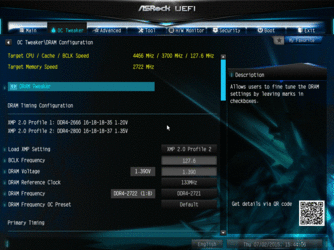- Joined
- Jul 20, 2002
I've had major problems getting my i7-5820 overclock stable and had pretty much given up until I tried manually setting the DRAM frequency to 133 MHz as opposed to 100 MHz. I tested this by running the exact same BIOS settings except for the DRAM frequency and noted that even at nearly the same DRAM frequency (say 2400 MHz) the system was unstable when using the 100 MHz DRAM frequency as opposed to the 133 MHz DRAM frequency. This instability was such that the system was unbootable when set at the 100 Mhz DRAM frequency and 2400 MHz (by manipulation of the multiplier). I now believe the AUTO setting for DRAM frequency is using 100 MHz.
Has anyone else come across this weird issue?
Has anyone else come across this weird issue?
